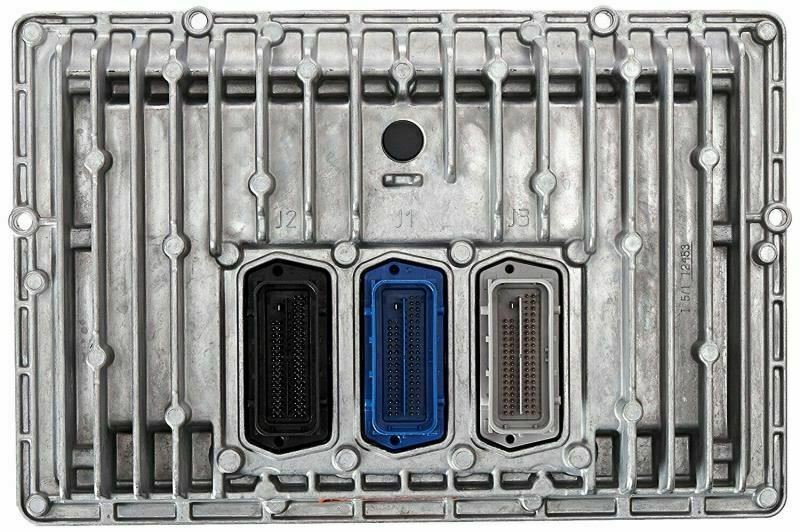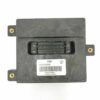Get Your Duramax Back in Service, Fast.
When your Silverado, Sierra, or Savana van is down, every minute counts. A faulty Engine Control Module (ECM) can bring your entire operation to a halt, causing frustrating no-start conditions, poor performance, and confusing check engine lights. This isn’t just an inconvenience; it’s a direct hit to your productivity. We provide the definitive solution: a reliable, used OEM ECM, professionally programmed with the latest GM software updates specifically for your vehicle’s VIN. This is the critical first step to getting your workhorse back on the road and earning its keep.
Common Duramax ECM Failure Symptoms & Your Solution
If your truck is experiencing any of the following, a failing ECM is a likely culprit. This module is the solution for issues such as:
- Complete no-start or intermittent starting problems
- Engine stalling or running rough
- Loss of communication with diagnostic scan tools (U-codes)
- Multiple unrelated diagnostic trouble codes (DTCs)
- Specific ECM-related codes like P0606 (ECM Processor Fault)
Instead of wrestling with a dead module or paying steep dealership prices for programming, our pre-flashed 2013-2014 Sierra 3500 6.6L ECM 12653319 arrives ready for installation, saving you significant time and money.
Features & Tangible Benefits
- ✔ VIN-Specific Programming Included: We flash the unit with your truck’s exact VIN and the latest factory calibrations, eliminating the need for an expensive trip to the dealer.
- ✔ Cost-Effective OEM Part: Get the reliability and perfect fit of a genuine factory component sourced from a salvaged vehicle at a fraction of the cost of a new unit.
- ✔ Minimize Vehicle Downtime: This module is the fastest path from diagnosis to repair, getting your essential vehicle back in operation quickly.
- ✔ Broad Compatibility: A direct replacement for service numbers 12654088 and 12653319, ensuring it works for a wide range of GM HD trucks and vans.
- ✔ Purchase with Confidence: This unit is backed by our one-year replacement warranty.
An Expert’s Note on Installation
As a 20-year technician, I’ve seen it all. While this ECM is programmed to your VIN to control the engine, modern trucks have sophisticated security systems. Upon installation, the vehicle’s Body Control Module (BCM) may not recognize the ‘new’ ECM, preventing it from starting. This is normal. A simple ‘Vehicle Theft Deterrent Relearn’ procedure using a capable scan tool or GM’s TIS2WEB system is required to sync the components. A professional mechanic can perform this, along with any other necessary relearns like for the crankshaft position sensor, in minutes. Planning for this final step ensures a smooth, successful installation.
Don’t let a faulty computer keep your truck sidelined. This programmed 2013-2014 Sierra 3500 6.6L ECM 12653319 is the smart, efficient solution to restore your Duramax’s performance and reliability. Provide your VIN at checkout, and we’ll handle the rest.
Frequently Asked Questions
What information do you need from me?
After you complete your purchase, you must provide us with your vehicle’s 17-digit VIN (Vehicle Identification Number). We cannot program or ship the module without it.
Will my truck start immediately after I install this?
Not always. Due to the factory anti-theft system, a ‘Vehicle Theft Deterrent Relearn’ is often required to sync this ECM with your truck. This is a standard procedure that must be performed by a qualified technician with the proper tools, like GM’s TIS2WEB system. Other relearns (crankshaft variation, injector flow rates) may also be necessary.
Is this a new part?
No, this is a used, genuine OEM part that was carefully recovered from a salvaged vehicle. It has been tested and is ready to be programmed for its next life in your truck.
How do I know this fits my truck?
This ECM fits 2013-2014 GMC Sierra, Chevrolet Silverado, Express, and Savana models with the 6.6L Duramax diesel engine. It is a direct replacement for service numbers (serv.no) 12654088 and 12653319. Please verify the part number on your original module to ensure compatibility.
What if I have problems after installation?
First, confirm that all required relearn procedures have been completed by a professional. If issues persist, please contact us. This unit is backed by our one-year replacement warranty, providing you with peace of mind.


